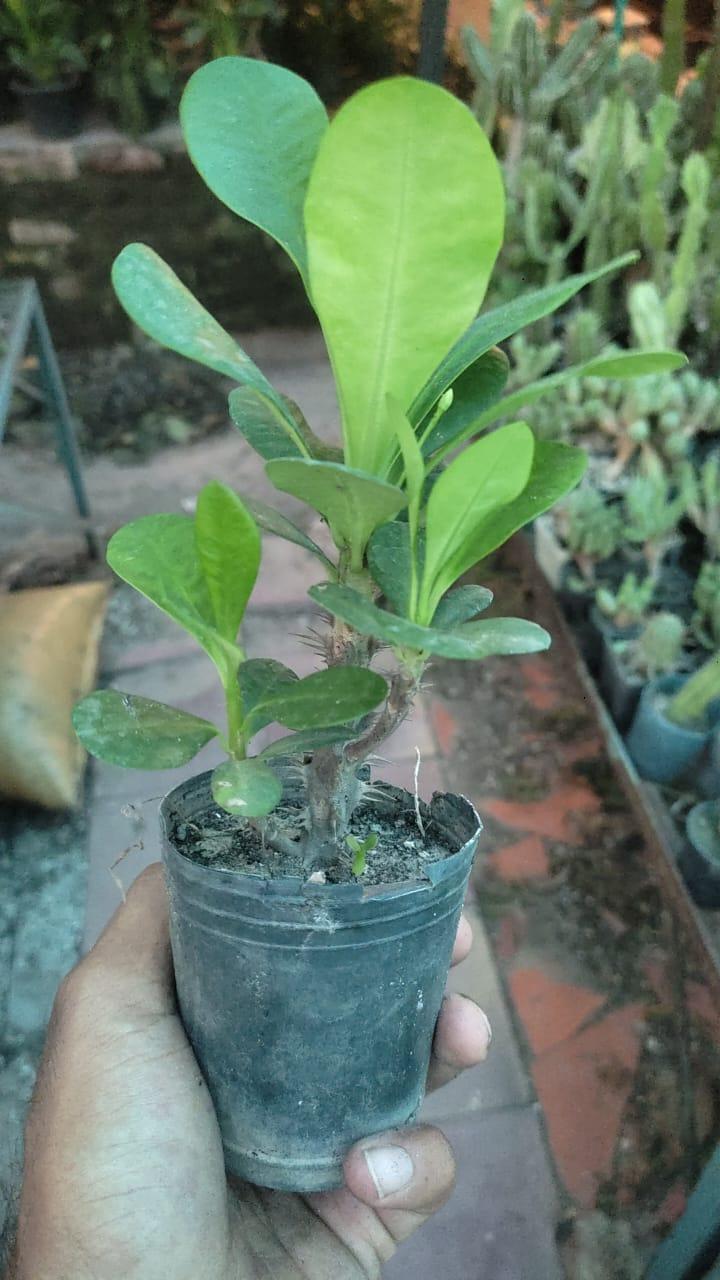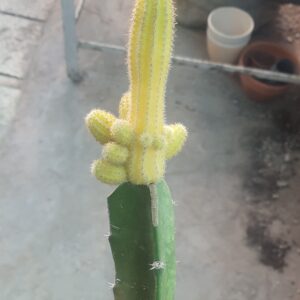Euphorbia Milii: The Complete Guide to Crown of Thorns
Euphorbia milii, commonly known as crown of thorns, is a versatile and hardy plant that has gained considerable attention among gardeners and plant enthusiasts. With its distinctive appearance, bright flowers and low maintenance nature, it makes a great addition to both indoor and outdoor gardens. In this guide, we will learn about the different aspects of Euphorbia mil, from its origins and properties to its care needs and possible uses.
Origin and History
Euphorbia milii comes from Madagascar, where it thrives in the dry areas of the island. It belongs to the Euphorbiaceae family, a diverse group of plants that includes poinsettias and gum trees. The plant gets its common name “Crown of Thorns” from the legend that its stems were used to make the crown of thorns that Jesus Christ wore during his crucifixion. Despite its ancient origins, Euphorbia milii has found a place in modern gardening thanks to its adaptability and striking appearance.
Physical Characteristics
Stems and Leaves
Euphorbia milii is a succulent shrub that usually grows 3 to 6 meters tall. The stems of the plant are thick, fleshy and covered with sharp spikes, giving it a unique and somewhat scary appearance. The branches act as a defense mechanism against herbivores and other threats. The leaves of the crown of thorns are oval, light green and grow mainly at the ends of the stem.
Flowers
One of the most attractive features of Euphorbia milii is its flowers. The flowers are small but bright and vary in color from red and pink to white and yellow. These flowers are actually bracts, modified leaves that surround true inconspicuous flowers. The bright colors of the bracts attract pollinators and add color to the plant, making it a popular choice for ornamental gardens.
Growing Conditions
Light
Euphorbia milii thrives in bright, direct sunlight. If grown indoors, it should be placed near a south-facing window where it receives plenty of light. Outside, it should be planted in a place where the sun shines most of the day. Insufficient lighting can cause leg growth and reduced flowers.
Soil
This plant prefers well-draining soil typical of its native dry environment. A cactus or succulent mix is ideal because it prevents water from pooling around the roots, which can lead to root rot. If you plant in the ground, make sure the soil has good drainage and consider adding sand or gravel to improve its structure.
Watering
Euphorbia milii tolerates drought and lives with little watering. During the growing season (spring-summer), it must be fully watered, but it must dry between waterings. During the rest period (fall and winter), reduce watering to avoid overwatering and possible root rot. A good rule of thumb is to water the plant when the top inch of soil feels dry to the touch.
Care and Maintenance
Pruning
Pruning is necessary to maintain the shape and health of the Euphorbia milii plant. Remove any dead or damaged stems, as well as any that appear weak or overgrown. Be careful when handling the plant, as the thorns can cause injury. Gloves are recommended to protect your hands from both the thorns and the sap of the plant, which can irritate the skin.
Fertilization
Euphorbia milii benefits from regular feeding during the growing season. Use a balanced, water-soluble fertilizer diluted in half every 4-6 weeks. Avoid fertilizing during the rest period, because the growth of the plant slows down and it needs less nutrients.
Propagation
Euphorbia milii can be propagated by stem cutting. Select a whole stem and cut off a 4- to 6-inch section. Remember to wear gloves to avoid contact with the juice. Allow the cutting to dry out for a few days before planting it in well-draining soil. Keep the soil slightly moist until new growth appears, indicating that the cuttings have successfully rooted.
Pests and Diseases
Although generally hardy, Euphorbia milii can be susceptible to pests such as spiders, mealy bugs and aphids. Check the plant regularly for signs of infection and treat with insecticides or neem oil if necessary. Excessive watering can cause fungal diseases and root rot, so make sure the soil drains well and avoid excess moisture.
Uses and Benefits
Decorative Value
Euphorbia milii is valued for its ornamental qualities. Its brilliant flowers and unique pointed stems make it a great addition to gardens, patios and indoors. It can be grown as a single specimen or used mixed in succulents.
Symbolism and Cultural Significance
In addition to aesthetic appeal, Euphorbia mil also has cultural significance in many traditions. In Christianity, it is associated with the crown of thorns worn by Jesus, which symbolizes sacrifice and redemption. In other cultures, it is believed to bring good luck and protection, making it a popular choice for home gardens.
Conclusion
Euphorbia milii or crown of thorns is a versatile and attractive plant that offers both beauty and flexibility. Its stunning flowers, hardy nature and rich cultural history make it a valuable addition to any garden or indoor space. With proper care and attention, this remarkable plant can bloom and delight plant enthusiasts for years. Whether you are an experienced gardener or a beginner, Euphorbia milii is a rewarding choice that will enhance your gardening experience.
Checkout our variety of succulent plants here : https://boota.pk/succulent-plants/
To learn more about your favourite plants, check our YouTube channel : https://www.youtube.com/@boota4474









Reviews
There are no reviews yet.